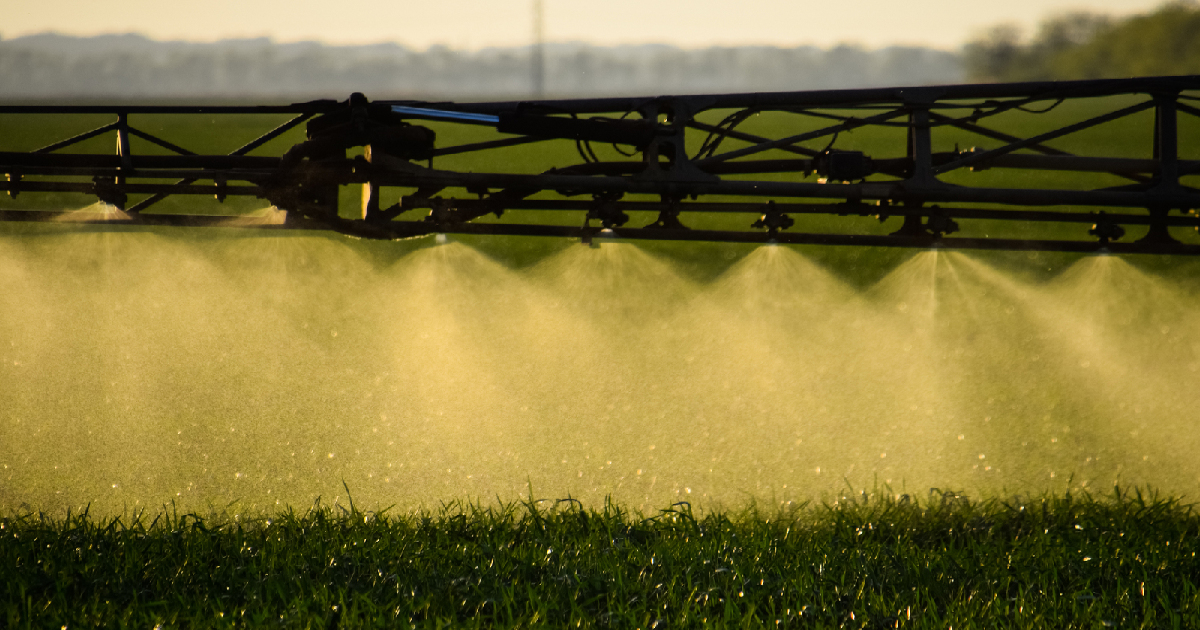If we want clean water to drink, clean air to breathe, a climate that can sustain human life and an environment that fosters human health, our state legislators must move as quickly as possible to completely phase out the use of synthetic nitrogen fertilizer.
TAKE ACTION: Tell your state legislators: It’s time to start phasing out synthetic nitrogen fertilizer and make a plan to ban it entirely by transitioning to organic agriculture and getting animals back on the land.

If you ask the U.S. companies that produce synthetic nitrogen fertilizer—CF Industries Holdings, Potash Corporation of Saskatchewan and Terra Nitrogen Company—they’ll tell you farmers can’t grow food without it.
But organic farmers grow food just fine without synthetic nitrogen fertilizer.
And scientists say we must drastically reduce its use.
The National Academy of Engineering calls synthetic nitrogen fertilizer pollution one of the “grand challenges” facing the world.
You’ve probably heard that synthetic nitrogen fertilizer:
• Pollutes drinking water with nitrates that cause “blue baby syndrome” and costs our public drinking water systems at least $4.8 billion a year.
• Caused the Gulf of Mexico’s dead zone, Lake Erie’s algal blooms and the red tides on the Gulf Coast of Florida. It also kills fish and even marine mammals like manatees.
But did you also know that synthetic nitrogen fertilizer is linked to a host of health problems, including:
• Birth defects. Nitrate in tap water is responsible for an estimated 2,939 cases of very low birth weight; 1,725 cases of very preterm birth; and 41 cases of neural tube defects in the U.S. each year.
• Cancer. (Read here and here.) Nitrate pollution of U.S. drinking water is estimated to cause up to 12,594 cases of cancer a year. Cancers linked to nitrate pollution include colorectal, ovarian, thyroid, kidney and bladder cancer.
• Deaths from air pollution. One in eight premature deaths worldwide are caused by nitrogen oxide-heavy smog, and fertilizers are a major source of this air pollution in agriculture states like California. Poor air quality from synthetic nitrogen fertilizer use on corn alone is associated with 4,300 premature deaths annually in the United States at a cost of $39 billion.
• Less nutritious food contaminated with heavy metals.
The current federal drinking water standard for nitrate, set in 1962, is 10 parts per million—yet cancer and other serious health issues are linked to levels less than one-tenth of the legal limit.
In 2019, Trump’s U.S. Environmental Protection Agency (EPA) suspended plans to reevaluate the agency’s outdated nitrate standard.
Synthetic nitrogen fertilizer is also a major source of greenhouse gas emissions.
The EPA refers to the use of synthetic nitrogen fertilizer in the U.S. as “Agricultural Soil Management.” According to the EPA, this “Agricultural Soil Management” accounts for 266 million metric tons of carbon dioxide equivalent (MMT CO2 Equivalent.) released into the atmosphere. That’s more greenhouse gas emissions than most countries.
U.S. agricultural soils currently draw down only a tiny fraction—10.3 million metric tons—of the CO2 equivalent emitted through the use of synthetic nitrogen fertilizer. So until we end the use of synthetic nitrogen fertilizer, it will be nearly impossible to restore our soils’ and croplands’ capacity to sequester carbon.
To learn more about the wicked problem of synthetic nitrogen fertilizer pollution, read “Monsanto’s Evil Twin: Disturbing Facts About the Fertilizer Industry,” by Organic Consumers Association’s Martha Rosenberg and Ronnie Cummins, and “Growing Food, Sowing Trouble,” a series of investigative reports from the Center for Public Integrity, Grist and The World.
Then take action!